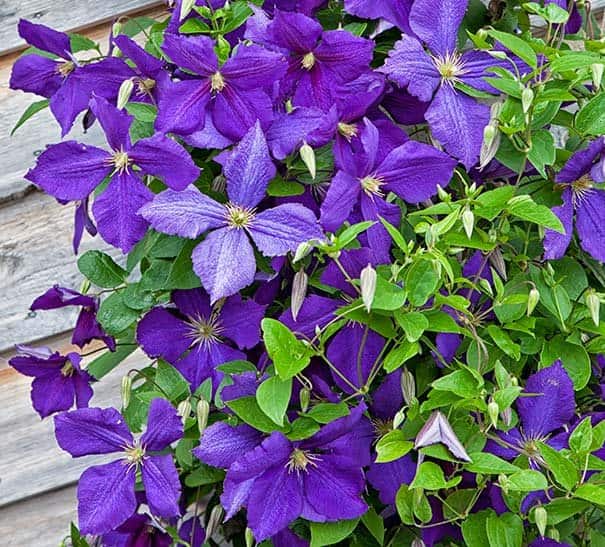Growing and Caring Climatis Plants

How to care Climatis Plants
1. Provide adequate sunlight: Climatis plants thrive in full or partial sunlight, so ensure they receive at least 6 hours of direct sunlight each day. Place them in a location where they can soak up the sun’s rays.
2. Water regularly: Climatis plants need consistent moisture, so water them regularly but avoid overwatering. Allow the soil to dry out slightly between watering to prevent root rot. Consider using a soaker hose or drip irrigation system to ensure even watering.
4. Planting and spacing: When planting Climatis, dig a hole that is twice as wide and deep as the root ball. Place the plant in the hole, making sure the top of the root ball is level with the soil surface. Proper spacing is crucial, as Climatis plants need enough room to spread out and climb. Aim for a spacing of 2 to 3 feet between each plant.
3. Port structure such as a trellis, arbor, or fence. Make sure the support is firmly anchored in the ground and can withstand throviding support: Climatis plants are known for their climbing nature. To help them grow and thrive, provide a sturdy suppe weight of the plant as it grows.
4. Mulch the soil: Apply a layer of organic mulch around the base of the plant to help retain moisture, regulate soil temperature, and suppress weed growth. This will also provide a natural source of nutrients as the mulch breaks down.
5. Prune regularly: Climatis plants benefit from regular pruning to control their growth, remove dead or damaged branches, and promote blooming. Prune in late winter or early spring before new growth appears. Consult specific pruning guides for your particular variety of Climatis plant.
6. Fertilize appropriately: Apply a balanced fertilizer formulated for flowering plants in early spring and again in late summer to promote healthy growth and abundant blooms. Follow the instructions on the fertilizer packaging for proper application rates.
7. Protect from extreme temperatures: Climatis plants can be sensitive to extreme heat or cold. Provide shade during hot summer days to prevent scorching, and cover the plant or move it to a protected area during frost or freezing temperatures.
8. Monitor for pests and diseases: Regularly inspect your Climatis plants for pests such as aphids, spider mites, or powdery mildew. Treat any infestations promptly with organic insecticides or fungicides, or consult a garden center for appropriate solutions.
9. Train the vines: As the Climatis plant grows, gently train the vines to climb along the support structure. This will help create a neat and organized appearance while also preventing tangling or overcrowding.
10. Consider companion planting: Pair your Climatis plants with compatible companion plants that can offer additional benefits. For example, planting low-growing ground covers around the base of the Climatis can help retain moisture and suppress weeds while adding visual interest to the overall garden design.
Remember to research the specific care requirements for your particular variety of Climatis plant, as different varieties may have unique needs.



























































































































































